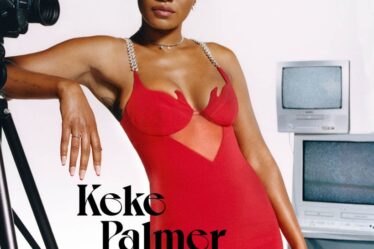
In October, before Farfetch announced that it would not be reporting its third quarter earnings for 2023 as planned; before Farfetch was sold in a fire sale to South Korean e-commerce giant Coupang; and before this weekâs announcement that 9 C-level Farfetch executives including founder and CEO José Neves would be leaving the company with immediate effect, I shared some thoughts in this weekly letter on what went wrong at the luxury e-commerce leader.
Now, itâs time for the business to look forward and find a way through the crisis that has distracted its teams and damaged Farfetchâs reputation in the industry.
Of course, Farfetch is not alone in its woes. Luxury e-commerce is awash with issues. From Net-a-Porter to Matches, once shining examples of fashion innovation are scrambling to contend with weaknesses in their business models, from the logistical friction and cost of managing shipping and returns to a lack of differentiation, which has led to an overreliance on discounting. Add to the mix the fact that big luxury brands are pulling back from third-party wholesale while customers are returning to physical stores after flocking to e-commerce during the pandemic because they are looking for better service and a more rewarding shopping experience.
But Farfetch has also made specific missteps and faces unique challenges. It strayed too far away from its core marketplace model and lost focus on the original vision to become the definitive technology platform for the luxury fashion industry. A spree of acquisitions became a distraction, and as a result the core marketplace business did not get the focused attention it needed to grapple with a rapidly changing market context.
And yet, I believe there is still an opportunity in global luxury e-commerce and Farfetch is well positioned to be the market leader. Once upon a time, luxury shopping online was the best way to find interesting and rare products from anywhere in the world. Farfetch was incredible because it reflected the collective curation of hundreds of boutiques on a global scale. This was a compelling proposition back then, and remains exciting now.
New owner Coupang certainly has its work cut out for it, however. Here are some thoughts on what Coupang chairman and CEO Bom Kim should do to chart the path forward and secure the future of Farfetch.
1. Re-energise and reassure the Farfetch team with a clear vision and strategy: The most urgent issue for Kim to address is the internal chaos and uncertainty inside the company. Following this weekâs executive exits, there will still be further layoffs and cost cutting, which will only further destabilise those team members who are left. They will naturally wonder if they will be next. Itâs better to make all the cuts at once, so Kim can reassure the remaining employees that their jobs are secure. But that will not be enough. They will also want to see a clear vision and strategy for the companyâs next act.
2. Prioritise the marketplace model and divest of non-core assets: Farfetch expanded into a lot of new business areas following its IPO in 2018 which slowly took the company away from its core marketplace model. While investments in the New Guards Group and Stadium Goods helped to boost revenue and profits in the short-term, they ultimately distracted the executive team from the core business. Now that the sneaker resale market is broken and New Guards anchor Off White has seen its sales plummet, the businesses are also a drag on profitability. Sub-scale retail assets like Browns and Violet Grey will also need to be sold off.
3. Secure the supply of luxury products from boutiques and smaller brands: In order for any marketplace to work, it needs a consistent supply of products at a global scale. Now that luxury brands are pulling back from wholesale (and Kering is in the process of unwinding its Farfetch contract) the writing is on the wall that the supply must come from elsewhere. Hundreds of boutiques who donât have the operations, customer service and technology to run their own e-commerce business use Farfetch to reach customers around the world, customers they cannot reach without Farfetch. Some of these boutiques make more than 30 percent of their revenues from Farfetch. In other words, they need Farfetch as much as Farfetch needs them.
4. Court mid-tier luxury brands: But boutiques alone will not be able to generate enough supply. In order to bolster supply, Farfetch should court smaller luxury brands looking for a global e-commerce footprint for their white-label e-commerce services. This will not be easy as they will need to compete with market leader Shopify. This week BoF reported that Farfetch was seeing workarounds to secure desirable brands like Loewe and The Row by disguising where they are being sourced from. This will only further damage trust with the brands. Indeed, one challenge that boutiques are facing as they consider their future relationship with Farfetch is that big luxury brands donât want them to list their products there. Some of the brands stipulate strict rules and conditions about where and how their products can be sold.
5. Forge key industry relationships: To build Farfetch, Jose Neves adeptly built strong relationships with industry players, one by one. Now, Farfetch must rebuild direct relationships with these brands again. The fact that the new leadership is not well known to the industry is a problem that can only be addressed through a personal charm offensive. Eventually, this may help to win the confidence of the big brands back too.
6. Focus on top clients: Forty percent of luxury sales come from just 2 percent of clients, also known in the industry as VICs, or very important customers, something that MyTheresa has done well, delivering strong results this week. Building and deepening relationships with these customers is essential to Farfatchâs future. Major luxury brands themselves are courting top clients to generate business. Farfetch must do the same by doubling down on its private client business.
7. Repair and rebuild the Farfetch brand: Customers have been observing the chaos at Farfetch from the sidelines which has undoubtedly impacted their view of the business. It would not be surprising if sales have been impacted by the news flow coming out of Farfetch. Farfetch will need to reignite its brand to build trust with customers and clarify why someone should shop at Farfetch versus any number of other online luxury multi-brand players. One angle could be that you can find the hardest to source brands and best products from the finest boutiques around the world, which is pretty much where Farfetch first started.
This Weekend on The BoF Podcast
The author has shared a Podcast.You will need to accept and consent to the use of cookies and similar technologies by our third-party partners (including: YouTube, Instagram or Twitter), in order to view embedded content in this article and others you may visit in future.
In the world of high fashion, few names have commanded as much attention â and controversy â as John Galliano.
Throughout the 1990s and 2000s, his sensual designs and runway theatrics earned him worldwide acclaim. But Gallianoâs career imploded in 2011 when a video of him emerged using antisemitic slurs. In a new documentary, âHigh & Low: John Galliano,â BAFTA-winning director Kevin Macdonald examines Gallianoâs meteoric rise, scandalous downfall, and the role of forgiveness and redemption.
âIf thereâs one thing that people could take away from the film, it is [that] things are never that simple. The grey predominates in life and in morality,â says Macdonald.
This week on The BoF Podcast, BoF editor-at-large Tim Blanks sits down with McDonald to discuss the phenomenon of cancellation and his own feelings about Galliano after completing the documentary.
Have a nice weekend,
Imran Amed, Founder, CEO and Editor-in-Chief, The Business of Fashion
P.S. Join us in person at the Times Center, New York â or via the global livestream on March 22 for the BoF Professional Summit â New Frontiers: AI, Digital Culture, and Virtual Worlds. Sign up now.
Plus, here are my other top picks from our analysis on fashion, luxury and beauty:
1. Can Farfetch Survive Coupangâs Shock Therapy? Founder José Neves and eight other C-suite executives are departing the luxury marketplace, which faces an uncertain future under its new owner.

2. Why We Canât Stop Talking About Khaite. Founder and creative director Catherine Holstein has learned firsthand that with great success comes even greater scrutiny. At her downtown Manhattan office, she opened up about what drives her designs, whatâs next for the buzzy label and why sheâll never leave New York.

3. Why DTC Brands Arenât Swayed by Cheaper Social Media Ads. The cost to advertise on Meta â once digital brandsâ primary marketing channel â has finally come down. But start-ups will continue to decrease their reliance on social media, including investing more in offline advertising and in targeting customers on Google, where the intent to buy is higher.

4. The Sneaker Resale Market Is Broken. Oversupply of once-hyped sneakers like Jordans has caused resale prices to plummet, pushing smaller platforms out of the market and sending the bigger players scrambling to adapt.

5. White Paper | Incorporating Generative AI Into the Fashion Workplace. As artificial intelligence continues to shape the fashion industry and its output, BoF Careers explores what AIâs advanced capabilities mean for the fashion workplace â and how the workforce could and should adapt to gain competitive advantage.

To receive this email in your inbox each Saturday, sign up to The Daily Digest newsletter for agenda-setting intelligence, analysis and advice that you wonât find anywhere else.



